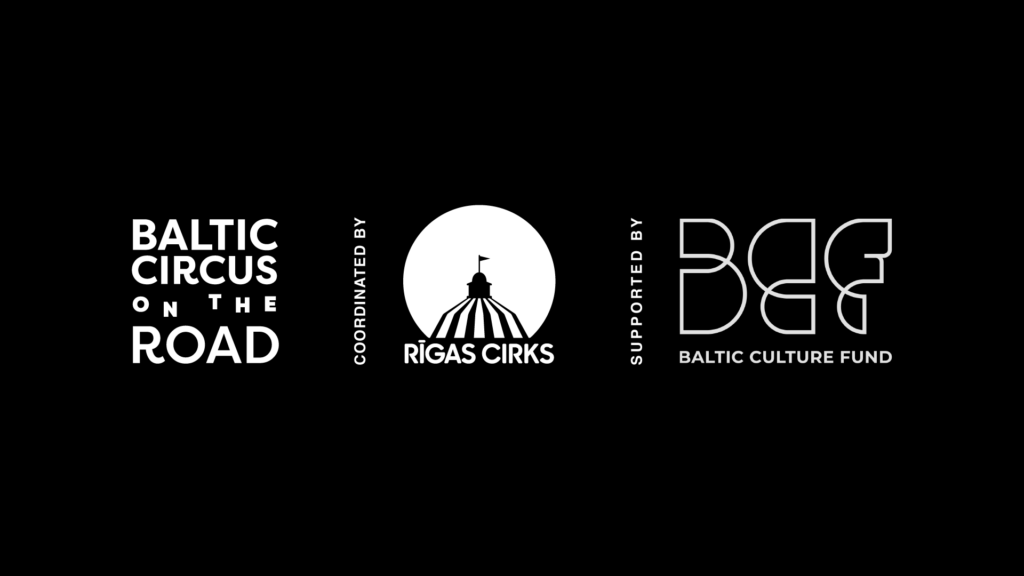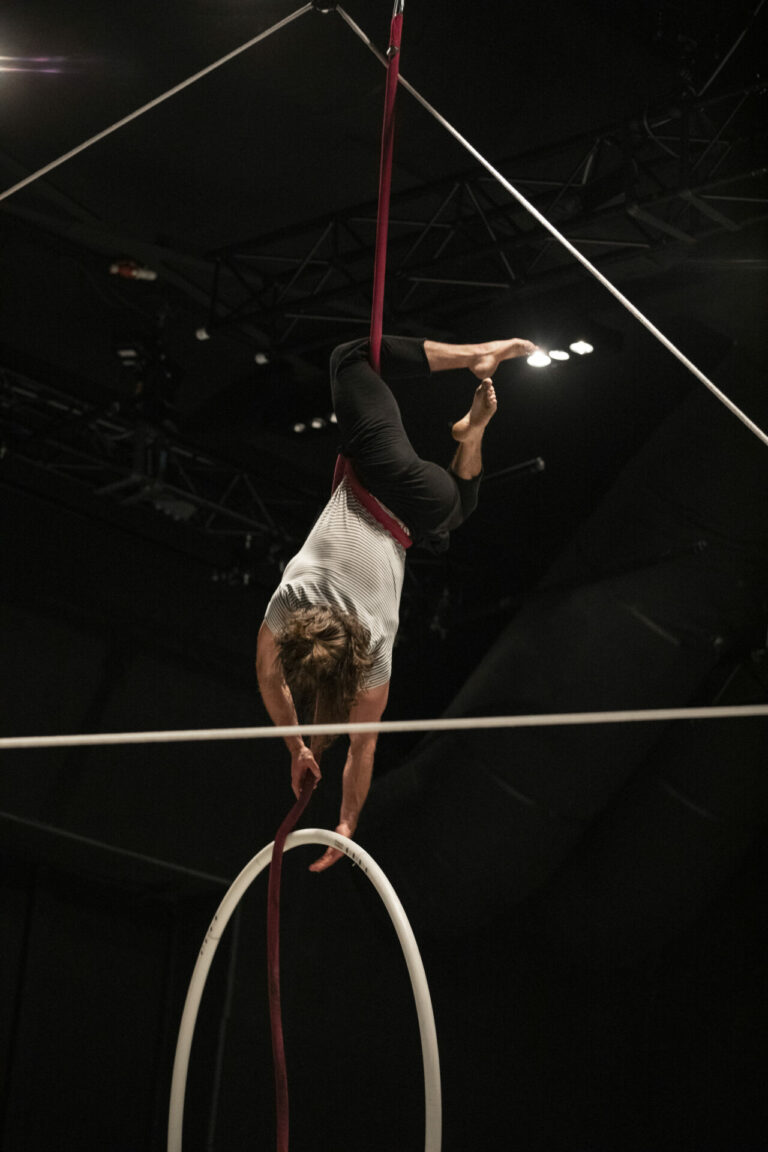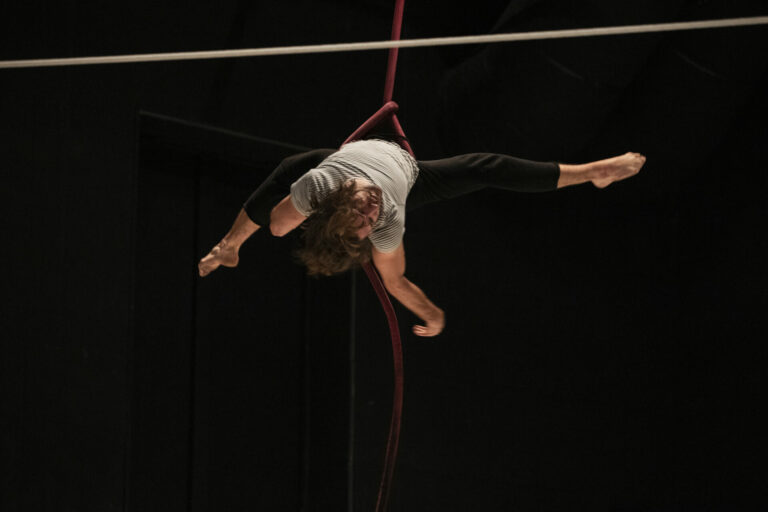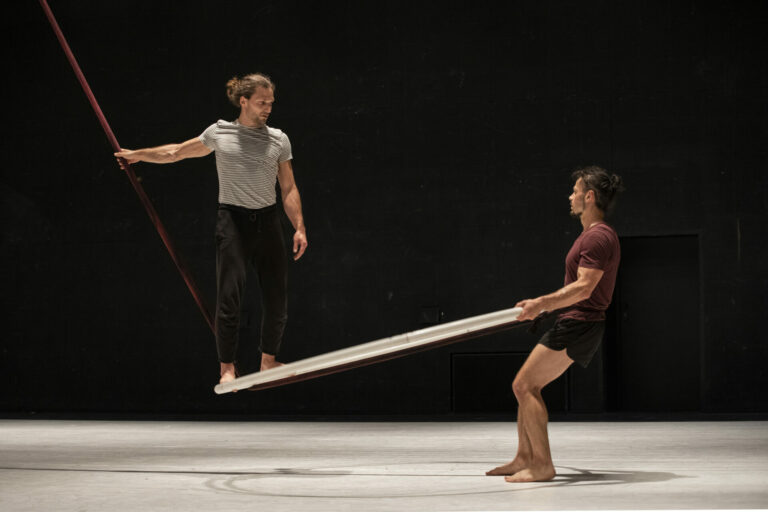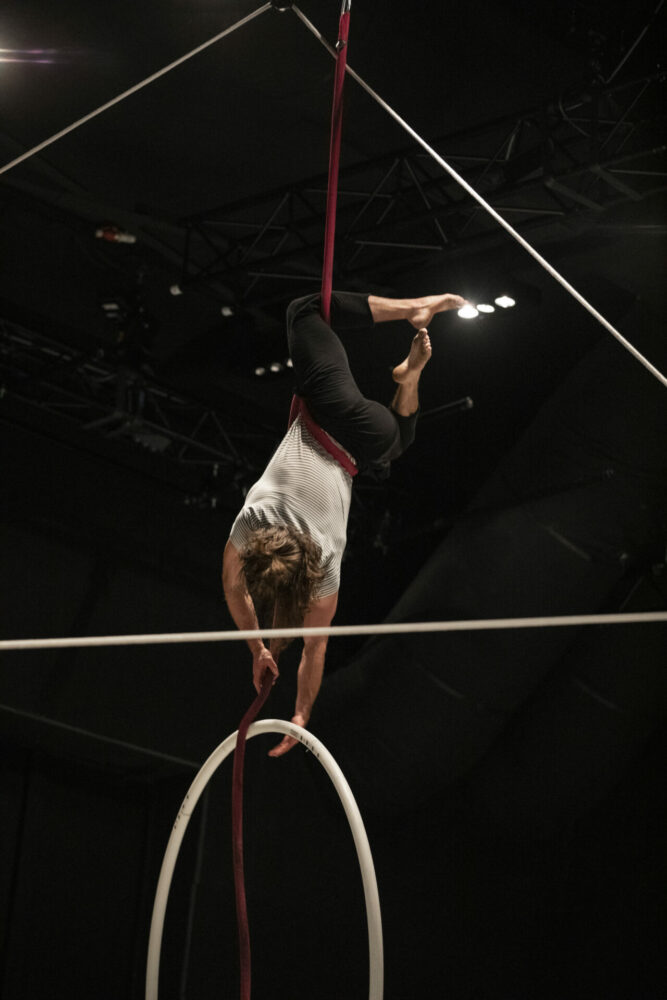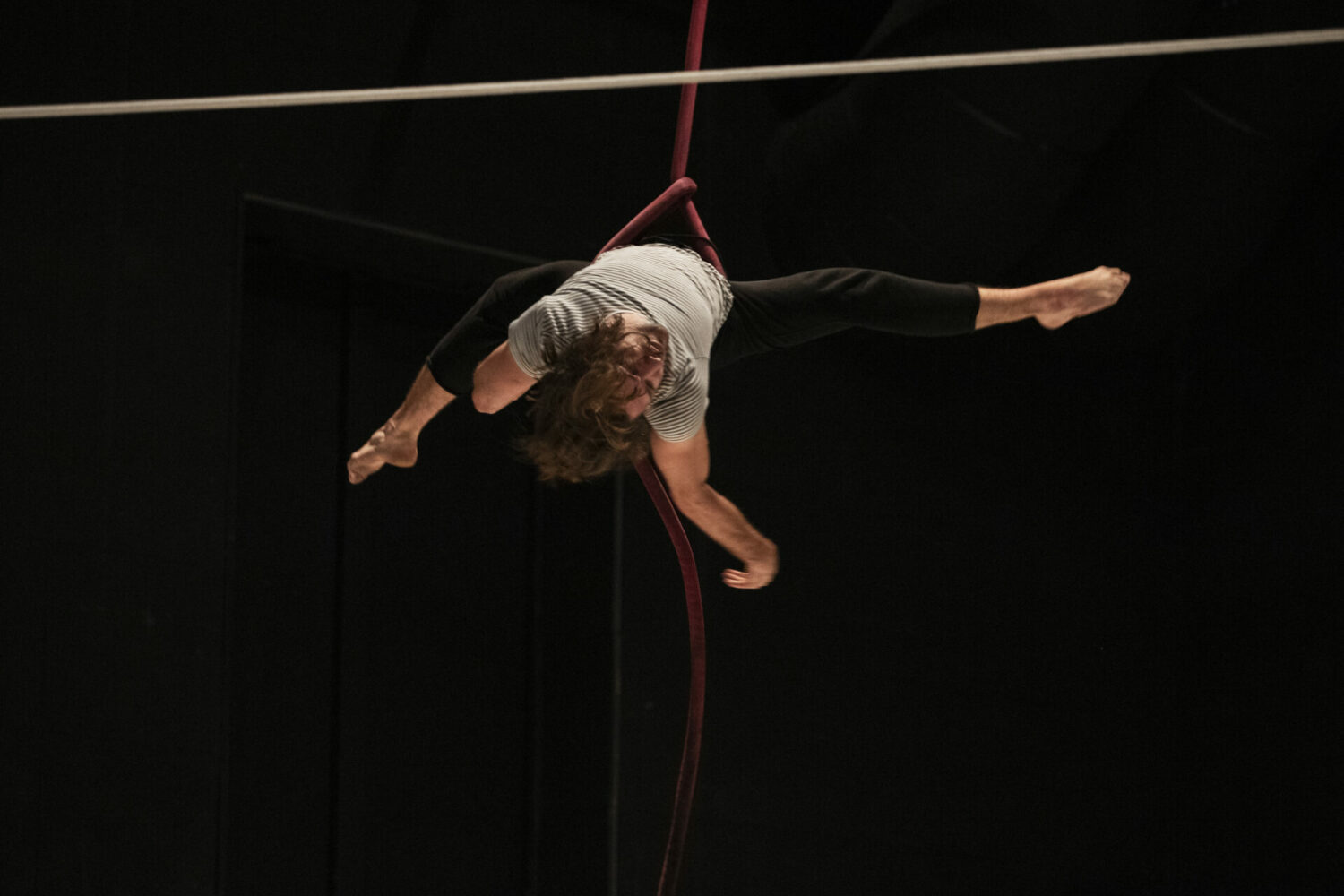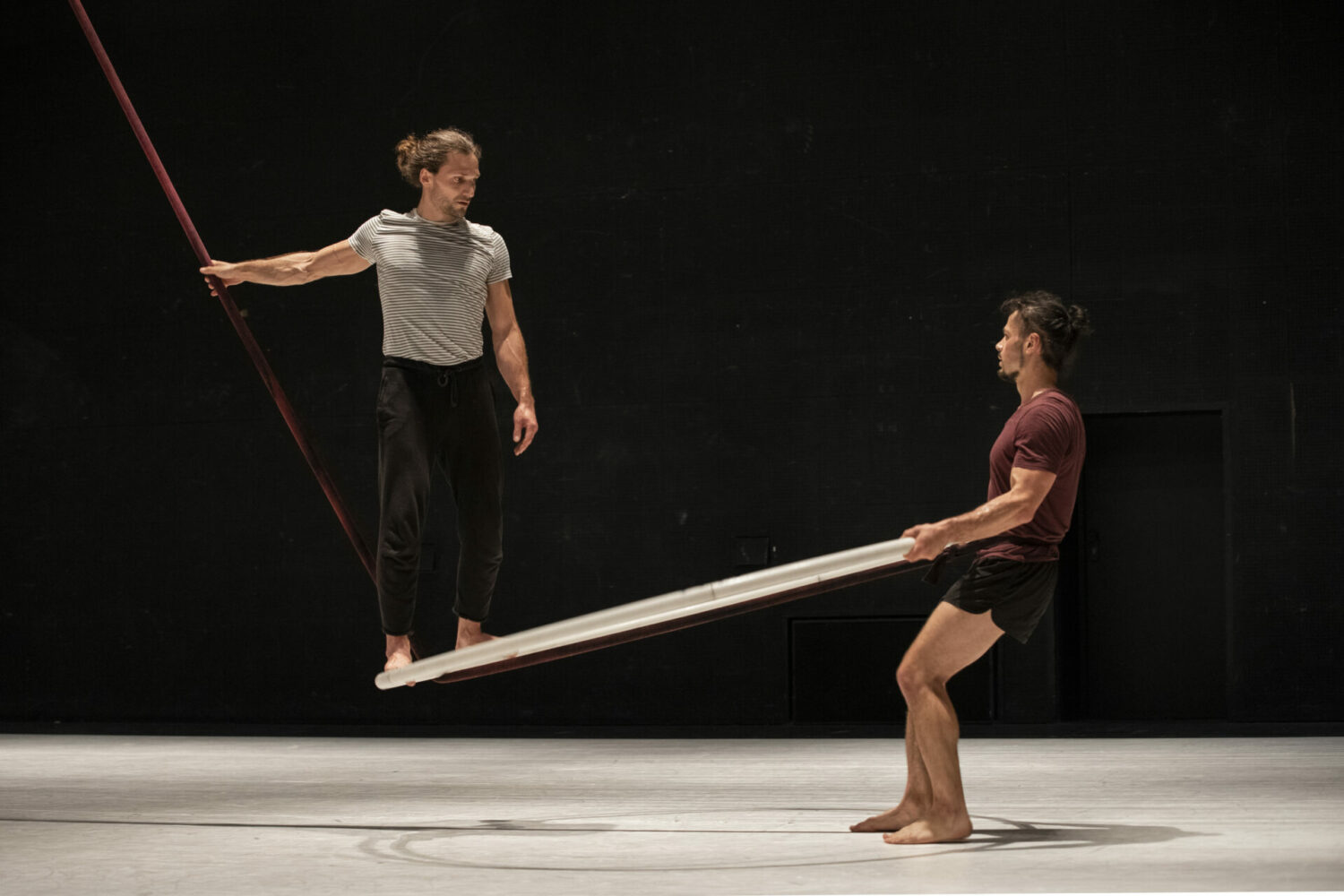Taigi Cirkas – artists in residency
10.09.2021.
This summer, Lithuania based circus company “Taigi Cirkas” were in residency at the performing arts venue Menu spaustuve in Vilnius in the frameworks of “Baltic Circus on the Road” project during mid summer of 2021. Artists pitch at the open call competition of the project was chosen by an international jury and they were selected as a company with great potential to represent the quality of the Baltic circus arts in European scope.
During the two-week residency artists worked on their new performance production. The contemporary circus show “Up to this point” is a collaboration between circus artists Konstantin Kosovec (Lithuania), Elena Kosovec (Lithuania) and Aleksey Smolov (Latvia). Contemporary circus company Taigi Cirkas was formed in 2016. Currently their company consists of two artists Konstantin Kosovec, Elena Kosovec and different collaborative artists from Baltic States. Supported by the Baltic Culture Foundation.
The residency in Vilnius involved work with a mentor Pau Portabella, who has specialised as clown, mime and theatre improvisation actor. Portabella graduated from physical theatre school “El Timbal” 2001 in Barcelona. He continued his formation in the circus schools of “Rogelio Rivel” in Barcelona 2002–2005 and centre des arts du cirque “Le Lido” in Toulouse 2006–2009, where he specialised in pair-acrobatics. Portabella has been working with various circus and theatre companies, and he has also co-founded “Fet a Mà” in 2009 with Marta Torrents. The company has international success with the performance “Cru”. Today he works as a director of contemporary circus and dance shows. He is also dedicated to form artists, focusing on the dramaturgy of the circus.
“Taigi cirkas” will present the result of the work-in-progress at:
-circus festival “Helium”, Vilnius, September 12. at 6PM at Menu Spaustuve / Arts printing house,
-Baltic professional circus show-case “Epicirq” in Tallinn, October 2, at 7PM at Sakala 3.
Photo: Monika Jaseviciute
The aim of the artists at the residence was to choose the certain movement material to work with and develop the general feeling and idea of the piece, as well as to develop the scenes and dramaturgy, looking for the relationships within the show, the transitions in between the scenes. In this creative process the artists were researching connection points between circus artists’ practices: everybody is looking for their artistic way in harsh conditions. What do their bodies feel and how do they change? What influence do the changes in the body have on the psyche and vice a versa, how do thoughts surface on the bodies? What happens when artists, each unique in its way with their loyal circus prop, gather in one space?
Elena Kosovec’s main discipline is aerial rope. In 2016 and 2019, she has learned rope technique in Rogelio Rivel circus school, Curso Profesional de Cuerda and attended OMIC Gravity circus classes in Barcelona. Since 2018 Elena is the head and a co-founder of the Contemporary Circus Association of Lithuania. 2019, she obtained the circus dramaturgy certificate from ESAC (Belgium) and CNAC (France) circus schools. Elena’s main passion is raising awareness of mental health and breaking the stigma around it, this topic has a huge influence on her creative work. Elena’s main creative focus is authenticity.
Konstantin Kosovec has been practicing contemporary circus since 2010, in rope discipline – since 2005. During that time, he has participated at many circus and dance productions and workshops in Lithuania and abroad. His one of the most important experiences was at FLIC and Rogelio Rivel circus schools, workshops with Robert Magro, Alexis Akrovatakis, William Thomas. 2019–2020, he attended Instructors E-learning course at Ecole Nationale de Cirque, Montreal. 2020–2022, he is doing his master’s studies of Contemporary Circus Practice at Stockholm University of the Arts.
Aleksey Smolov (Aleksejs Smolovs) professional activities started as a specialist in medical gymnastics, but his desire for freedom of artistic expression through the language of circus has moved to the forefront. Aleksey regularly complements and deepens his skills and knowledge by participating in various masterclasses, from movement research to specific circus disciplines, making training trips to European circus schools (DOCH (Sweden), AFUK (Denmark)), attending courses organised by international circus organisations, and continuing to improve himself daily. Aleksey participates in various circus and interdisciplinary projects, shows and concert shows (“Faux Pas/Note misplaced”, “Cabaret O”, “Cabaret Absinthe”, “Svalbard Cabaret Night”, “Carmina Burana”), as well as solo performances, both in Latvia and abroad.
Video from Taigi Cirkas work-in-progress during the residency.
Artists’ thoughts after residency:
What were you expecting from the project and collaboration with Pau Portabella?
The goal for the current stage of the creation was to come up with a clear idea or feeling of what our movement material obtained in the previous residencies is communicating to us and the audience. We were looking for the structure, bonds, relationships within the certain scenes that appeared in the interaction of bodies, objects and space. It was expected for Pau to direct our focus on the certain points that we come up with, assist with structuring the show and providing the tools to go deeper in the development of the material we had already.
How did you meet, how was the collaboration? How do you evaluate his working style?
It was an amazing time together, Pau gets really immersed and excited when working, being there for us and searching for the ways to get the most benefit for the creation. His way of work is structured and very consistent, as well as productive, because of the usage of the different tools. We worked with video a lot, which Pau has systematised and picked up the most exciting moments or the scenes we could look at more deeply and re-work them afterwards.
What were you planning to develop (techniques, scenes, …) and how it resulted?
We had many goals to achieve in different aspects: technical research on the rope-wheel interaction in different constellations – wheel attached to the rope or rope to the body in the wheel, rope knots on the wheel etc., creative rigging research, acrobatics and discipline choreographies, scenes and the dramaturgy of the show. I’d say that we arrived at the place where we have some clear ground under our feet.
How did residency help and what are your next steps?
The residency was incredibly helpful due to many reasons: getting clear with a movement material, putting it in the scenes, developing the dramaturgy, finding relationships and a general atmosphere of the piece. But also it was super beneficial for the company to find the common language, realise the needs of each other, and set up certain ways of communicating ideas with others. It was fantastic to have Pau working with us in real life at this point, because we needed his energy, knowledge and intuition at exactly this moment of the creation, and would be happy to receive it on the next stages of development of the piece.
